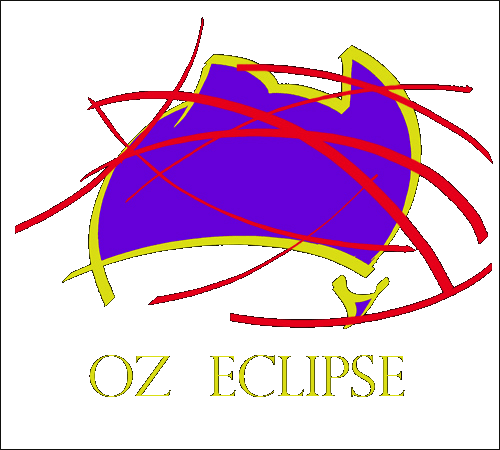
 |
WAITING FOR THE
SHADOW
SOLAR AND LUNAR ECLIPSE OBSERVINGHOME PAGE |
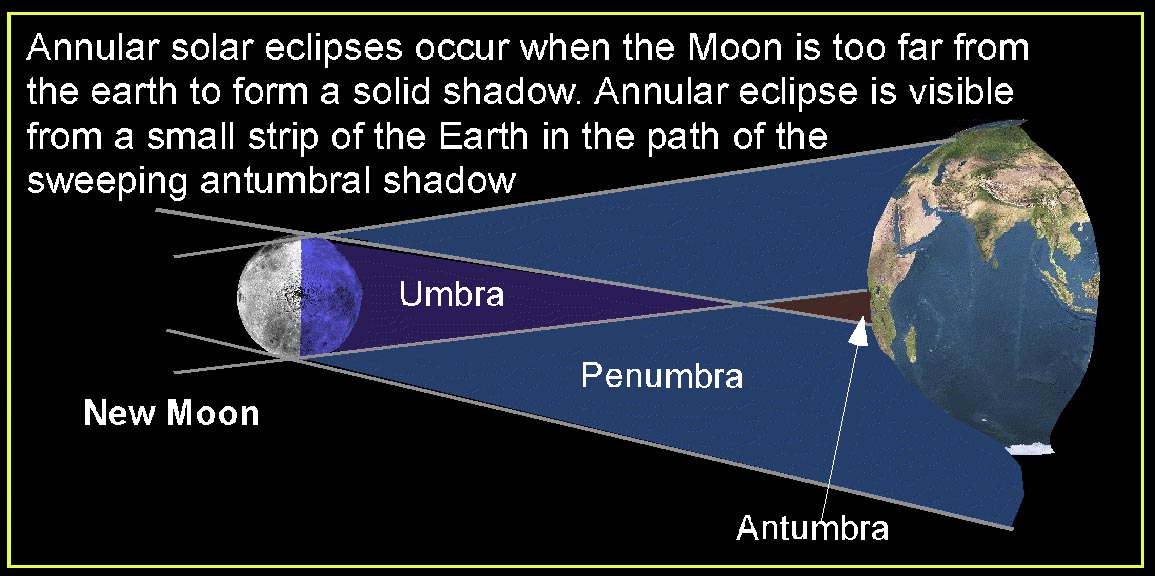
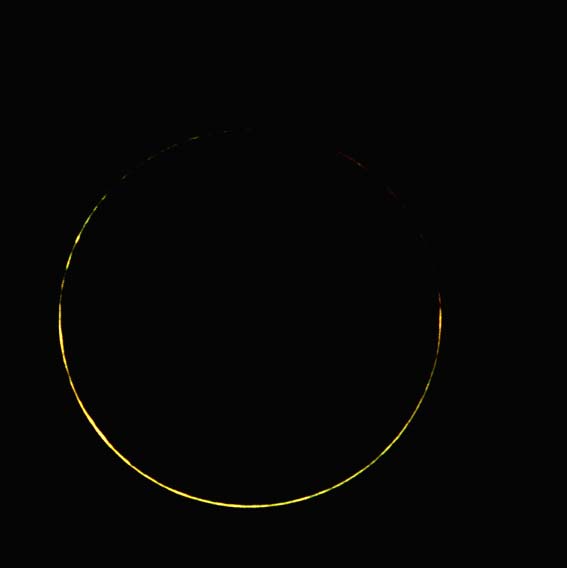
 |
Visibility of the
Annular Eclipse
|
 |
Visibility of the associated
partial solar eclipse
|
| Region | Velocity |
| Newman Tennant Creek Cape York |
307 000 km/hr 10 000 km/hr 5 000 km/hr |
| NEWS FLASH******** Currently, (April 8, 2013) Jetstar has flights from Sydney to Alice Springs for $189 each way. If you fly in May 8, Fly out on the 12th, you can hire a Toyota Corolla for $130 with 400km free. You'll drive 500km to Tennant Creek (southern limit) or 600km up to the centre line and same distance back to Alice so find out the excess km rate and factor in an extra 600km - 800km to your budget. Rentals come with 100km per day so if you stay longer, you will have more rental but less excess km. |

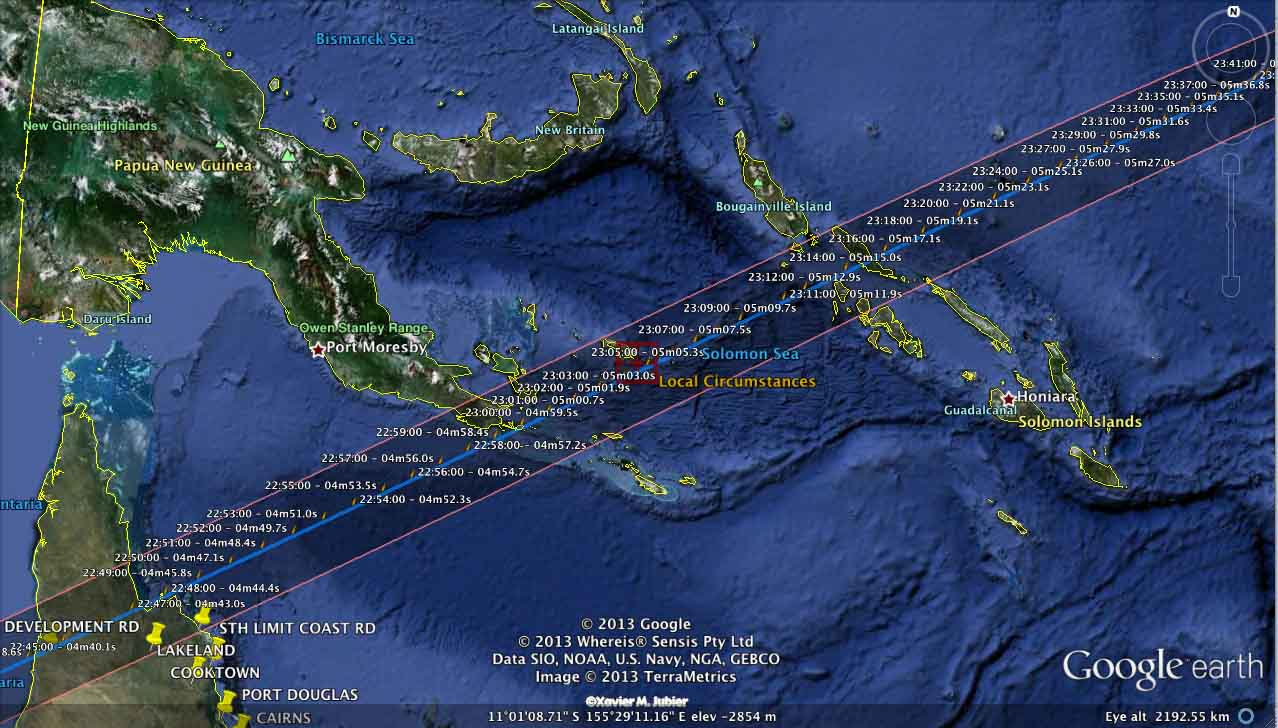
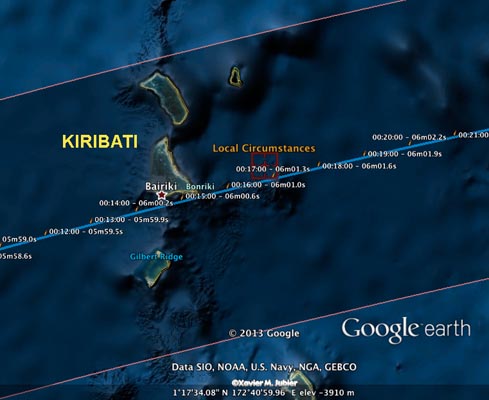
EYE SAFETY : How to protect your eyes during a partial eclipse?
During the partial eclipse and during the annular eclipse, you must use special techniques to protect your eyes. Looking at the Sun at anytime during an annular eclipse or even on a normal day can burn the retina causing permanent eye damage.The Sun is as dangerous to look at during a partial eclipse as it is on any other day. On a normal day, if you glance at the Sun or get the Sun in your eyes for example while you are driving, you don't go blind. But you can't stare at the Sun for any period of time. During the eclipse, you don't have to protect your eyes from glancing contact with the Sun any more than you do on a normal day. The problem is that during the eclipse, there is a temptation to stare at the eclipse for extended periods especially as the Sun gets covered. Staring can cause burns on the retina leading to permanent blind spots.
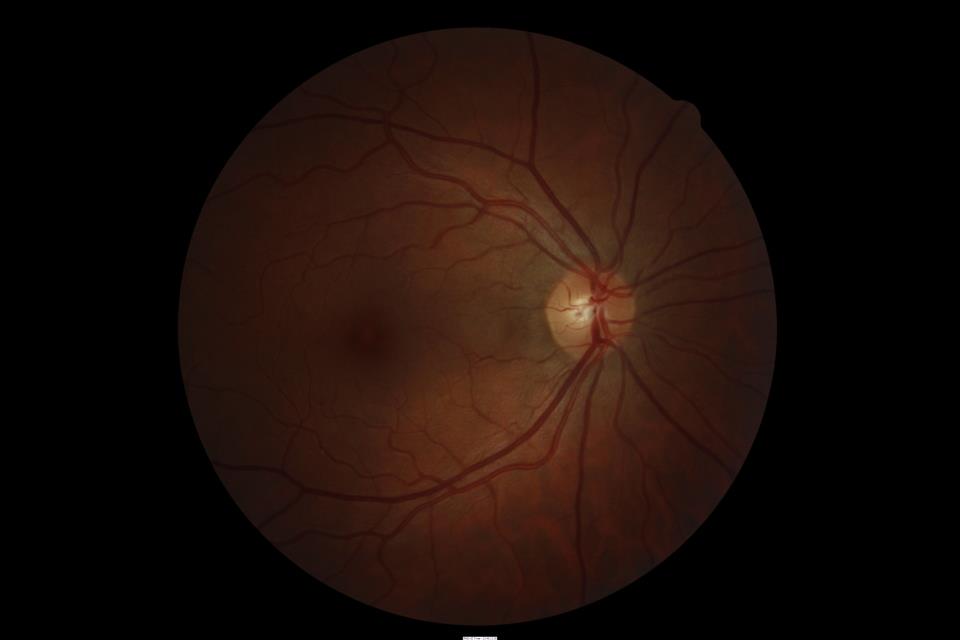
Retinal digital image of a solar eclipse retinal burn. The burn is the dark ring 1/3 of the way in from the left edge.
This boy sat in the back of a family car in October 1976. This 10 year old was staring at the progressing partial eclipse
as his unsuspecting family drove to a mountaintop to watch
the total eclipse. He has suffered a permanent blind spot
for the past 4 decades. This is a recent photo taken at age 45.
When he was young, the burn was noticably crescent
shaped but no photos are available from that time.
Using found materials from around the home as defacto solar filters is very dangerous. These materials don't filter the dangerous UV and IR rays and can lead to blind spots even though the image looks dark enough to the eye. Examples of unsuitable filters include pinholes, photographic film negatives, medical x-rays, cd's/DVD's, smoked glass, emergency foil blankets and silvered confectionary wrappersamong many others. There are no materials found around the home that will safely filter the Sun's high intensity light. Some of these materials might look similar to solar filters but they are definitely NOT safe. The best policy is to assume that if it hasn't been made for the purpose, it isn't safe.
Even during the annular eclipse when the Sun is almost completely covered and the ambient lighting begins to looks like like twilight, the energy in the very thin crescents and annular ring is more than capable of causing a permanent burn to the retina.
There are two accepted safe methods for watching a partial eclipse. One is to look through some sort of specially made filter material, the other is to use some sort of projection method.
Filters
Eclipse shades are special cardboard frame sunglasses with properly
made solar filters built-in. These should be available for purchase
from any astronomical equipment suppliers. These are the most
convenient filtration method. Do read the instructions. Some of these
shades are not rated for continuous viewing but for viewing 30 seconds
at a time. A pair of eclipse shades will probably cost less than
$10.00. These cardboard glasses use special filter materials that
effectively cut all wavelengths of light including the dangerous IR and
UV that defacto materials pass to your eyes. Your eyesight is
definitely worth the investment. Other suitable filters are a number 14
arc welding filter available from welding suppliers or a special solar
filters available from astronomical suppliers designed to be attached
to telescopes or binoculars. There is no Australian Standard for
eclipse glasses however there is a European Standard. Look for the "CE"
certification on the glasses.
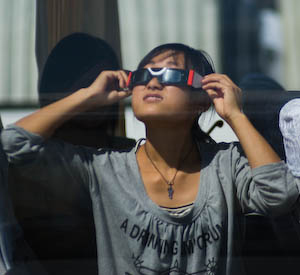
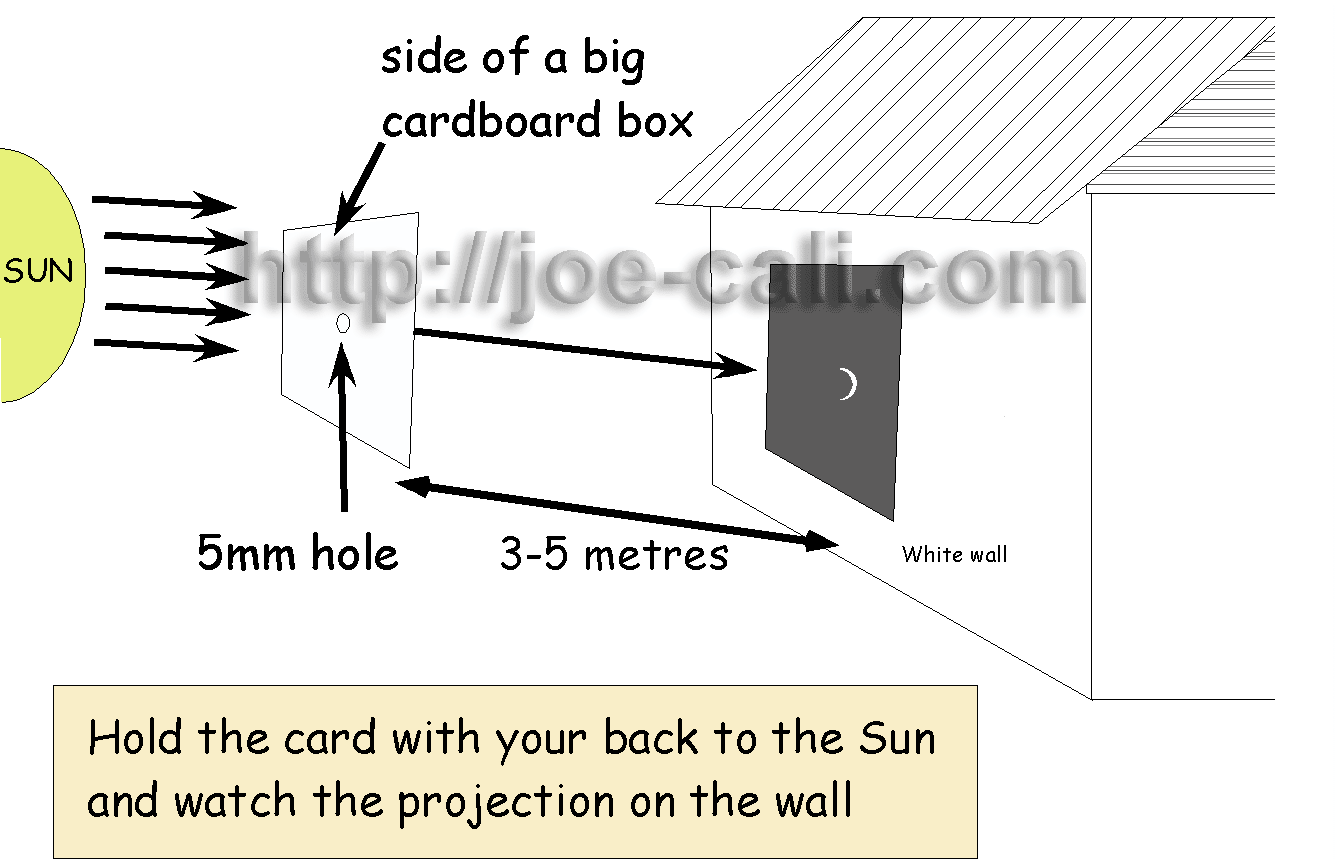
The Sun will be rising as the eclipse begins. Stand about 3-5m away from the east wall of a white walled building. With your back to the Sun hold the card up so that its shadow falls on the wall. In the middle you will see a small image of the partially eclipsed Sun.
Eclipse glasses are the best way to view an annular eclipse or a partial eclipse. The projection method is adequate for partial eclipses.
Recommended Suppliers of "CE" Certified Eclipse Glasses in Australia
Ice In Space Shop 
Limited stock available!
http://shop.iceinspace.com.au/shop/iceinspace-eclipse-glasses/ |
BINTEL The Binocular and Telescope Shop
 http://www.bintel.com.au/Accessories/Solar-Filters/Solar-Eclipse-Glasses/1042/productview.aspx |
Weather Prospects and travel recommendations
A more detailed analysis of the weather for this eclipse can be found on Jay Anderson's web site. http://home.cc.umanitoba.ca/~jander/ase2013/ase2013intro.html
However the two maps below from the Australian Bureau of meteorology and the MTSAT image make the weather prospects pretty easy to see without detailed explanations. The maps show the distribution of sunshine hours and relative humidity for the month of May averaged over 15 and 30 years respectively. You can see that Far North Queensland is least favourable with higher humidity and comensurately less sunshine hours.
Tennant Creek has the best of the weather, is relatively easy to access and with the partial eclipse starting at sunrise, annular eclipse at 16o elevation and probably offers the prime viewing location for the majority of observers. Newman has slightly poorer weather prospects, much higher expenses. The first half of the eclipse occurs before sunrise and the sun rises at annular eclipse on the horizon. A handful of experienced observers including me, who have already seen annular eclipses high in the sky, are going to Newman for a different experience. Many people I'm aware of seem to be heading for Tennant Creek with a few heading for north Qld. For observers heading out for their first annular eclipse experience, my recommendation would be fly to Alice Springs and drive to Tennant Creek. Just remember that accommodation may be limited so book or bring camping gear.


Maps courtesy of the Australian Bureau of Meteorology. Eclipse path overlay by Joe Cali
Beyond the land of Oz
It might be tempting to head for an exotic Pacific Island for this eclipse. As we discovered during the July 2010 total eclipse, weather is not as cooperative as one might hope. In the MTSAT image below taken on May 10, 2012, it is clear that the weather deteriorates rapidly eastwards from the Great Dividing Range on Cape York out towards PNG, the Solomon Islands and beyond.

Eclipse Resources
Eclipse Maps by Michael Zeiler http://eclipse-maps.com
NASA Solar Eclipse Home Page http://eclipse.gsfc.nasa.gov/solar.html
Xavier Jubier's Google Map Interactive calculators http://xjubier.free.fr/en/site_pages/solar_eclipses/xSE_GoogleMapFull.php?Ecl=+20130510
Xavier Jubier's Google Earth Interactive tool http://xjubier.free.fr/en/site_pages/SolarEclipsesGoogleEarth.html
Bill Kramers Google Map Interactive calculator http://eclipse-chasers.com/tseCalculator.php
Weather Prospects and eclipse maps by Jay Anderson http://eclipser.ca
NEXT PAGE = > tabulated local circumstances for a number of towns, cities and locations around Australia
LAST PAGE = >
.